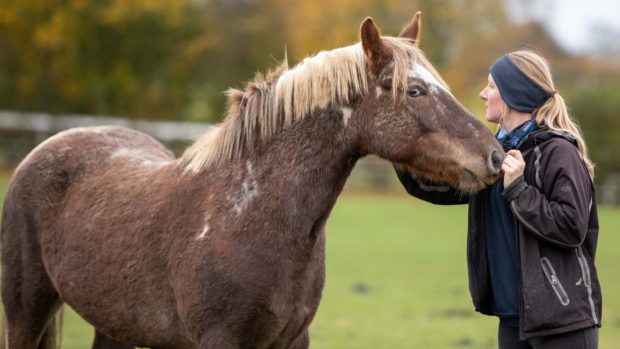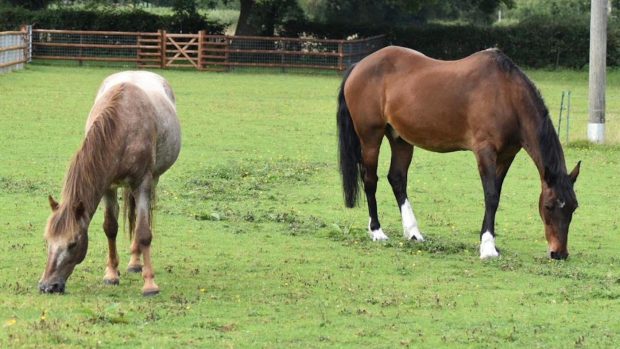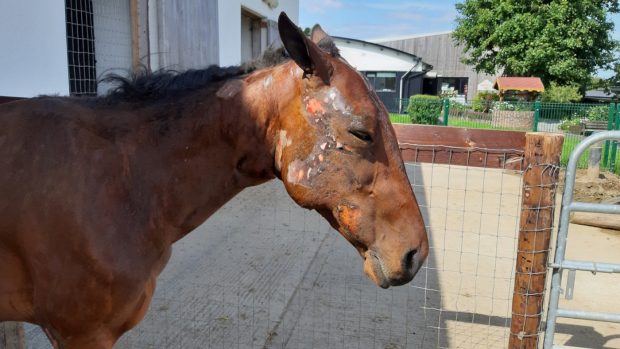Hidden behind a modern building in a small private mews in the heart of the capital is a reminder of a very different London. The new Blue Cross animal hospital, opened in 2001, is crammed with machines and monitors, sterilising equipment and row after row of canned pet food and drugs.
In the kennels on the second floor, a Jack Russell terrier waits to be allowed home, and several cats sleep next door. Upstairs, budgies, rabbits and the odd exotic pet recuperate.
At the back, there is a sense of the site, close to Victoria Station, as it was when the hospital first opened in 1906. Then the Duke of Westminster’s stables, it was perfectly suited to an organisation whose primary concern at that time was the welfare of working horses.
The buildings themselves have been demolished twice since then, but the shape remains. The staff door to the current hospital marks the former entrance to the donkey ward, and the lab at the end of the mews, with a small flat overhead for the vet on night duty, was once the stables. The courtyard itself was a crowded waiting room.
Previously unseen photographs, discovered in a storage cupboard following the rebuilding work, show mares and foals being cared for in the area, as well as many moving images of life on London’s streets as far back as the 1900s.
Pat Quigley, who joined the charity at Victoria in 1948 as “the chief veterinary surgeon and the only veterinary surgeon” (there are now nine), recalls how little had really changed since the turn of the century, when he arrived.
“In the far corner of the yard there was a ramp that went up to the stalls, and immediately below that were looseboxes. The upstairs had already been turned over to dogs and cats, but the donkey ward had donkeys in it and there were always the odd two or three horses,” he says.
“There was a horseman who looked after the stables, but if there was any ‘real’ veterinary work – for instance, if we had a horse with colic – we’d call in a specialist. This was the time that the small traders were moving over to vans, but there were still a lot of equine vets in London.”
The Blue Cross launched a campaign in the late 1940s to find useful work or happy retirement homes for horses which were no longer needed to pull carts, so many of the residents were awaiting new owners. This kind of work, continued by the two Blue Cross equine centres in Oxfordshire and East Sussex today, was integral to the existence of the organisation.
The Blue Cross began as an offshoot of Our Dumb Friends’ League, a fund intended to rescue many of the horses abandoned in France after World War I. Large numbers were shipped back to the UK and new homes.
Other early campaigns revolved around day-to-day working conditions in the capital. In 1905, the trace horse scheme was set up and some nine heavyweight horses stationed, with their attendants, at the base of London’s steepest hills. Their job was to help smaller, weaker animals pull their loads to the top.
Some became local celebrities. Wimbledon Jack climbed Wimbledon Hill for nearly 20 years before his death in 1939, and a report of the time describes how he was regularly visited by the district’s children “as though he were a half-holiday outing”.
The charity also provided free oatmeal and water to working equines at three bases in the city, and ran up to 16 horse ambulances, attending animals which had collapsed in the street or were involved in road accidents – an increasing occurrence as motorists took to the roads.
From 1909, the charity ran street traders’ and costers’ fairs in several London parks. Like the Blue Cross parades, these were fund-raising events, but were also a chance to meet working horsemen, encourage greater care and establish good practice among drivers.
The ethos of the Blue Cross has always been to help owners as well as their animals. The current service, which has some 25,000 animals a year going through the hospital in Victoria alone, is for those without the means to pay for private veterinary care.
Public awareness was raised by the presentation of Blue Cross medals to animals or owners who had shown unusual bravery. One photograph shows a 17-year-old miner posing awkwardly for the cameras with his medal — awarded after he put his own life at risk to save a colliery pony from a collapsing roof.
Particularly poignant, given today’s uncertainty over the live export of horses, was a personal campaign taken up by the joint secretaries of the Blue Cross in the 1950s.
“Horses were being transported from Ireland to Belgium for human consumption, and there was always some concern about the travelling conditions,” remembers Pat. “But there was one boat in a terrible storm one night, and she went over. All the horses were lost.
“Our joint secretaries at the time were a brilliant team. One was an ex-news journalist and the other was a really charming Englishman. They went to Ireland, got hold of the minister for agriculture, and wanted to know why the horses should be subjected to this; why they couldn’t be slaughtered at home. It was the culmination of the fight, and the transportation of live horses from Ireland was stopped.”




